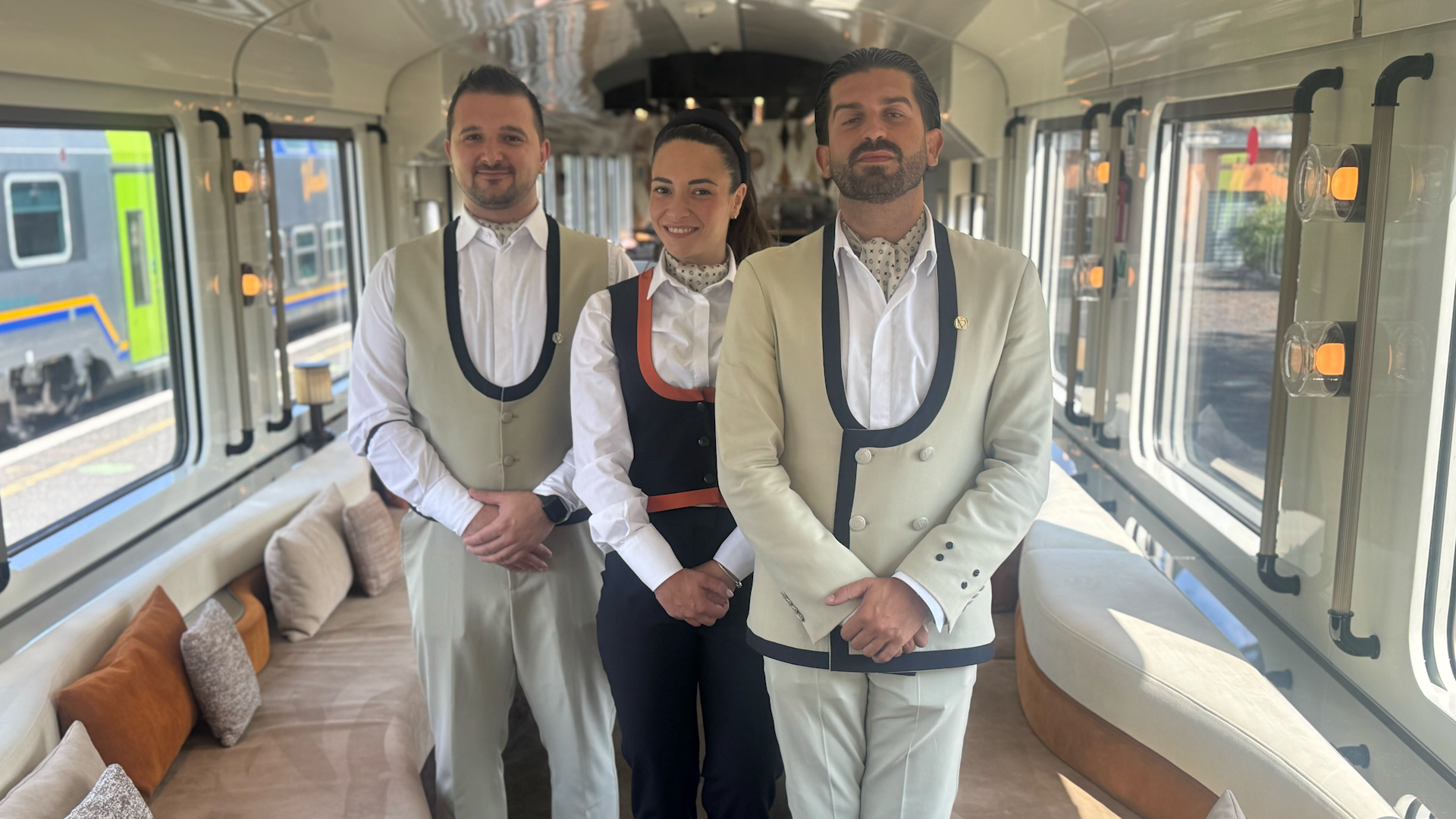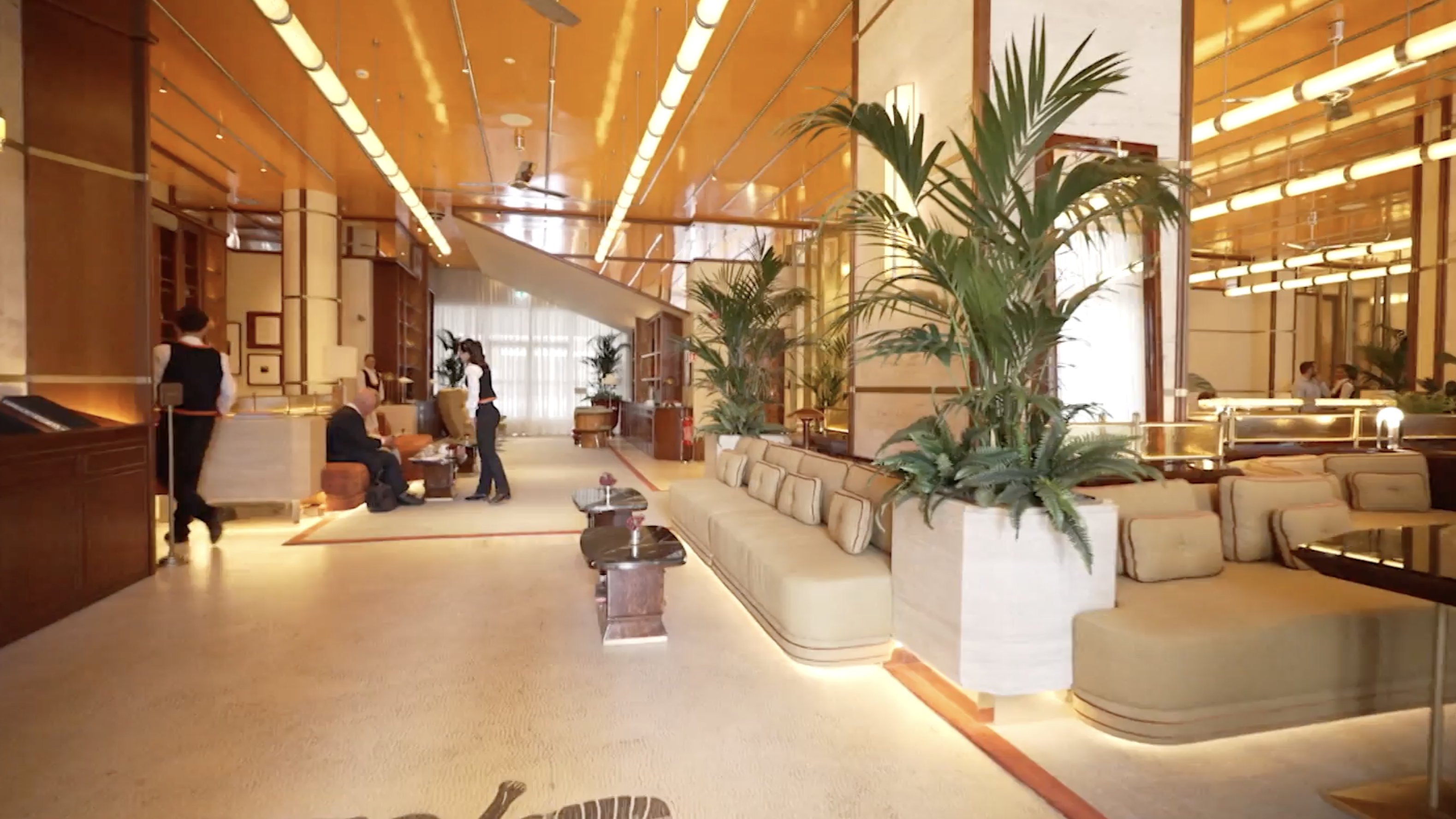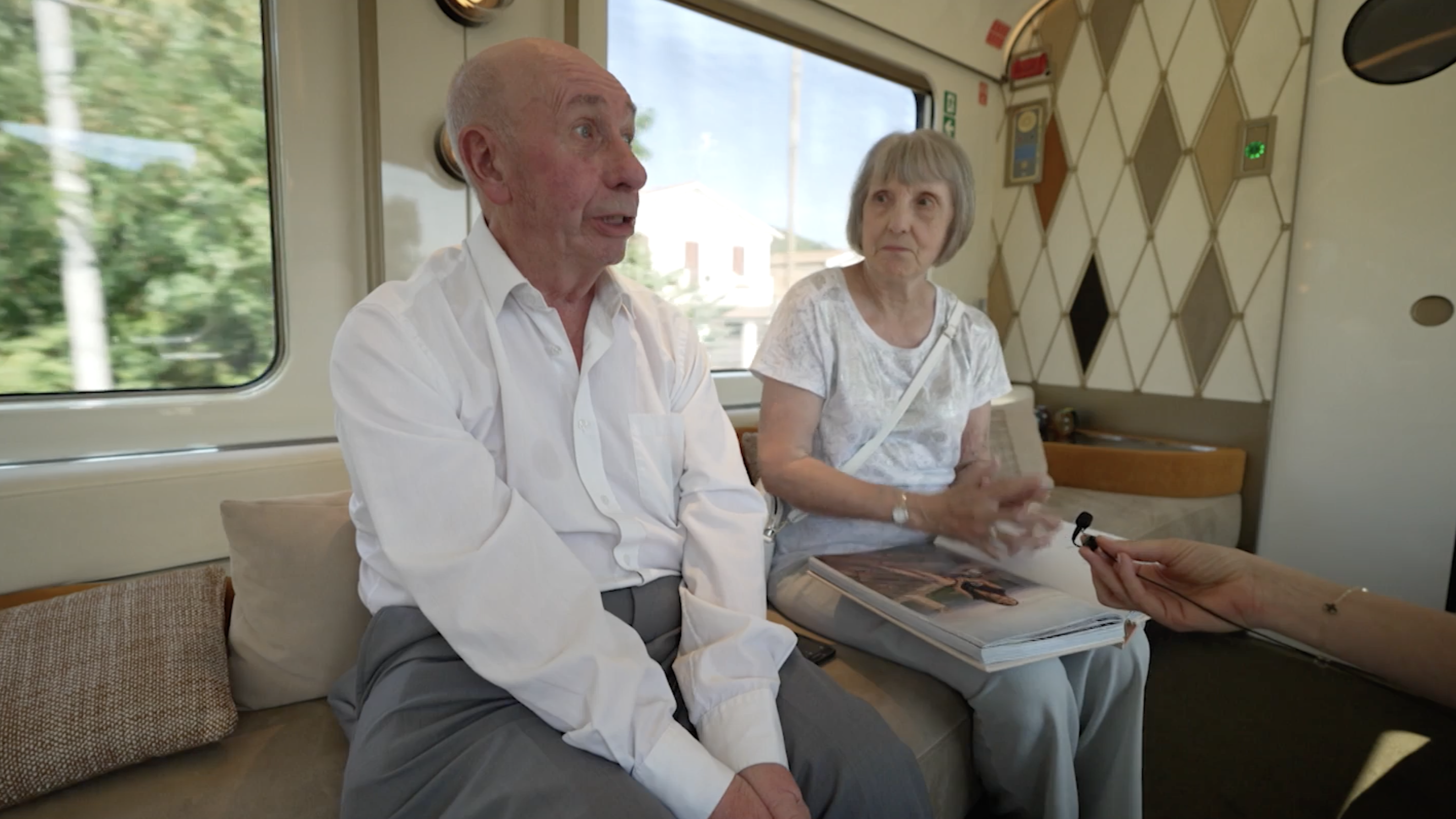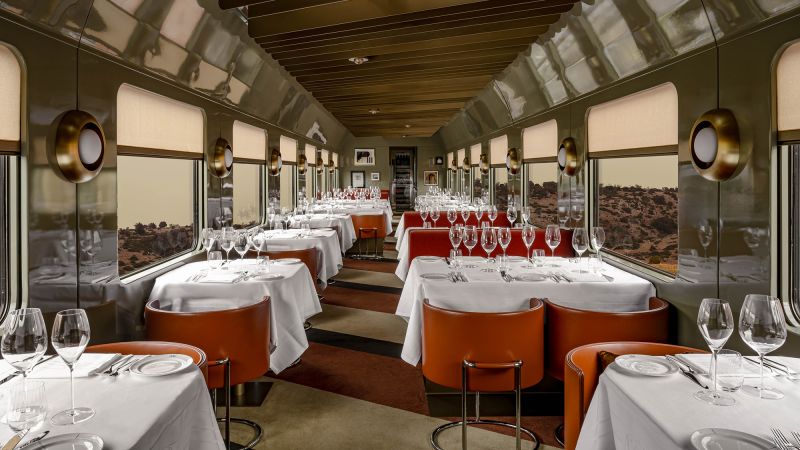Tuscany, Italy
—
Italy has an expensive new means of transportation, but it’s not a Ferrari. Announced earlier this year, the Dolce Vita Orient Express is the country’s first domestically produced luxury train and is being pitched as an homage to the 1950s and 60s, when glamor meant Fellini, Valentino and after-dusk sunglasses.
Featuring 18 itineraries, each one takes you through the Italian countryside with a cinematic, nostalgic feel. This summer we went on the “Taste of Tuscany Vineyards” tour. It’s a 24-hour fever dream with wood paneling, wine, and customer service.
It all starts at Rome’s Ostiense Train Station, a luxurious lounge designed by French architect Hugo Toro. There are 20th-century mosaics beneath your feet, live jazz music plays, and waitstaff serve snacks before boarding. Your luggage will be carried to your cabin.
You’re already a million miles away from the noise and chaos of rush hour commuting outside.

The Orient Express, a 150-year-old idea, returns to Italy

A train is waiting on platform 8. A vintage Z1 Italian vehicle from the 70s and 80s has been dismantled and rebuilt into retro cocktail lounge chic by Milan-based interior designers Dimorestudio.
There are 30 cabins, 18 suites and 12 deluxe rooms, each with its own bathroom. My suite is a well-organized 118 square feet with a double bed, sofa, table, two armchairs, and a Dyson hair dryer as standard in the bathroom.
Deluxe cabins are a little smaller but ingenious, with sofa beds and stools that double as sofas and coffee tables.
Conductor Raffaella Mattioli knocks to greet you and reminds you that you can text if you need anything. Concierge service on the rails.

Lounge at Ostiense station.

A few cars down, lunch is served while admiring black-and-white photographs of Italy’s fashionable past. Inevitably, the cuisine comes with Michelin status. German kitchen genius Heinz Beck designs the menu, and his long-time collaborator Walter Canzio prepares it to perfection in what amounts to a closet complete with pots.
“If food can give you an emotion, you can create the perfect plate,” Canzio tells us. He’s not wrong. I try the tuna carpaccio version of the pappa al pomodoro, followed by the amberjack with zucchini, almonds and saffron. The Italian countryside stretches out beyond the window, and the food is neatly arranged on a plate.
Performing culinary magic in a small space is “challenging and thrilling at the same time,” Canzio adds.
It’s not just a train, Paolo Valletta, CEO of Italy’s Arsenale Group, one of the consortium of companies behind Dolce Vita that includes French multinational Accor, insists it’s a way to “experience Italy in 360 degrees”.
After lunch, snacks are available at the lounge bar. There are no major concerns, as the staff will be resting in their cabins during the 24-hour journey. Railway manager Dora Dombey said the choreography was primarily needed to create a luxury hotel experience with a series of boxes on wheels.
It’s not just about charm. As the Dolce Vita follows a normal course in Italy, it may make stops for routine events such as engine changes, traffic jams, delays, etc. At least thanks to these, guests can convince themselves that they are experiencing the “real” Italy.
Prices for Taste of Tuscany Vineyards tours start at €3,500, or approximately $4,110, per person for two days and one night on board. This is very close to the budget. Golf-themed itineraries start at 12,360 euros ($14,520), including four days of fairways and fine dining.
Optional options, such as a $500 tour of medieval Montalcino with Brunello wine tasting, feel almost subdued by comparison.
For dinner, guests are looking for a more elegant atmosphere. The staff are already changing into stylish uniforms for the evening ahead.
“It’s amazing,” says British guest Christine Arrowsmith, who was traveling with her husband Colin, as she listens to the toots and honks of the resident jazz band. “We love Italian design. There’s something special about it.”
There are plenty of places to relax on the train, including lounges, dining cars, and dining cars, perfect for mingling with other passengers or pretending to read a book while having a drink. There is definitely more interaction here than in a hotel. It’s like summer camp, except with better tailoring.
Sleeping in the bedroom was comfortable enough, but the rhythm of the train’s stops and starts reminded me that such attractions still needed to be pulled by an aggressive locomotive. I woke up several times. That wasn’t a problem in such a comfortable environment. However, perhaps in revenge for the sweltering summer Italy has endured, the temperature felt a little too frigid.

Experienced train travelers Christine and Colin Arrowsmith say the Orient Express is a step above other trains.

The train is the first of six that Arsenal plans to roll out by 2027. Further routes to Istanbul, Split and Paris are also planned.
Meanwhile, the company has projects in Saudi Arabia (with a service called Dream of the Desert), as well as Egypt, Uzbekistan, and the UAE.
And as that clearly wasn’t enough, Arsenale has partnered with Orient Express to open two luxury hotels. La Minerva opened in Rome earlier this year, and Palazzo Dona Giovanelli is scheduled to open in Venice in April 2026.

“Our idea is to expand our fleet and create a fleet that respects our traditions and the countries to which our trains travel,” says Valletta. “Similar to the cruise industry, we hope that within the next 50 years there will be a lot of trains running around the world and people will be able to actually do combinations of hotels, trains, ships, etc.”
But for now, Dolce Vita is a luxurious revolving stage set, transporting passengers from one classic Italian postcard to the next.
Breakfast comes out in the morning and is over in no time. Before heading our separate ways, we are ushered once again to the lounge where it all began for a final civilized snack to ease the landing as we return to reality.

